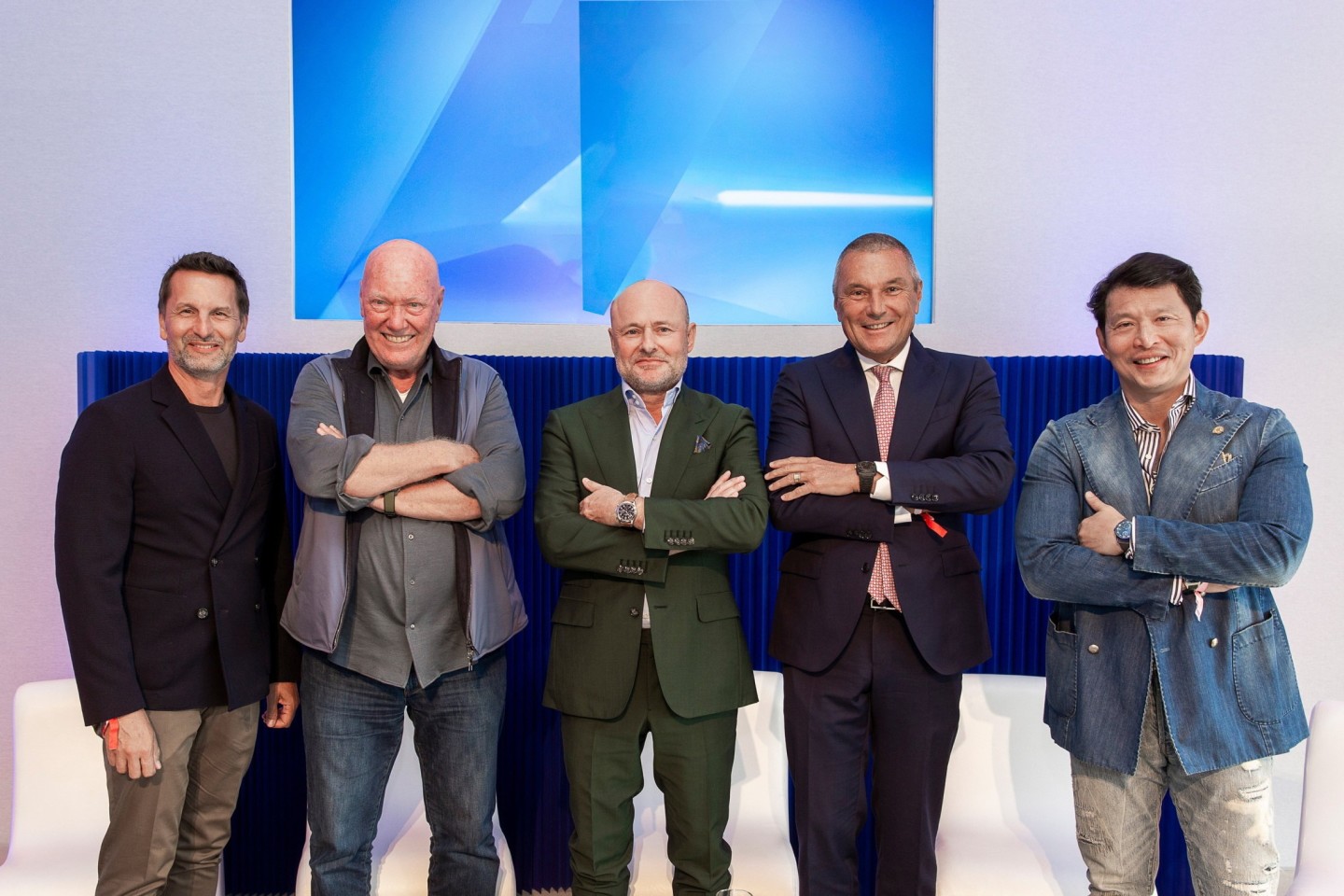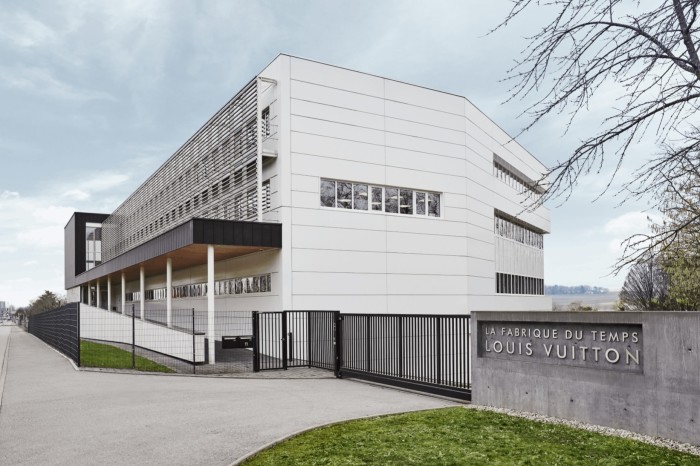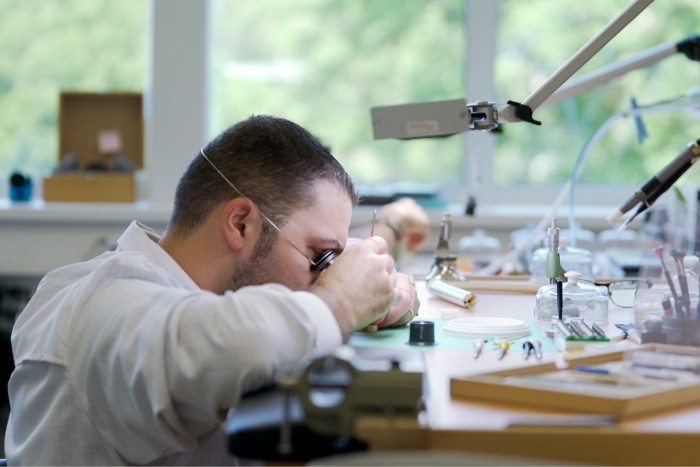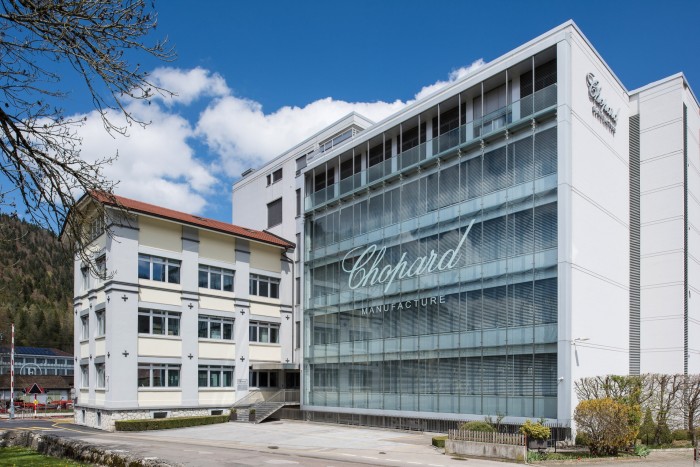Training ticks up as watchmakers look to plug skills gap

Roula Khalaf, Editor of the FT, selects her favourite stories in this weekly newsletter.
Watchmaking scholarships and training programmes funded by watch brands are growing in number. A straightforward lack of watchmakers is the reason most commonly offered by watch brand bosses.
Last week’s auction, organised by Phillips in association with Bacs & Russo at the annual Geneva Watch Days fair, offered 15 lots donated by brands to fund a scholarship at the Ecole d’Horlogerie de Genève.
“This will not solve the situation, but it will drive attention to the issue,” said Antoine Pin ahead of the auction. He is managing director of Bulgari’s watch division and the president of Geneva Watch Days, an industry salon founded by Swiss watchmakers Breitling, Bulgari, De Bethune, Girard-Perregaux, H Moser & Cie, MB&F, Ulysse Nardin and Urwerk.
Swiss watch exports by volume have been in decline for the past couple of decades — 15.8mn units in 2022, down 47 per cent from 29.8mn in 2000, according to the Swiss watch industry federation FH — so it may be difficult to grasp why the industry needs more watchmakers. “Volumes have decreased, but the value has gone up, which means that watches have become more complicated, and high complications need time and skills,” says Pin.
In an effort to increase revenues and margins, and thereby boost their brand equity/market value, several watchmakers have been ditching quartz models in favour of mechanical (manually wound) and automatic (self-winding) watches with more complications.
According to the Swiss watch industry federation FH, watches with a wholesale value of less than SFr500 ($568), usually retailing below $1,000, have suffered the most, declining by more than half (from 23mn units in 2015 to 11mn units in 2022). Conversely, the export of watches with a wholesale price of more than SFr3,000, often retailing above $5,000, rose by a third (from 1.5mn in 2015 to 2mn in 2022).


“The volume of mechanical watches [exported] between 2000 and 2018 tripled from 2.5mn to 7.5mn,” says Oliver Müller, founder of Swiss consultancy LuxeConsult. He also projects that over the next decade, the Swiss watch industry, despite employing 60,000 people, could face a shortage of about 4,000 skilled professionals. Müller says the problem dates back to the 1980s when the digital watch craze discouraged young people from pursuing a career in watchmaking and related jobs.
But he points out that the brands themselves are also responsible for skill shortages. “They have invented this new criterion that being a serious watch brand means having an integrated manufacture, which was never the case in the past,” he says.
Until about 10 years ago, watch brands would use movements produced by other companies — Audemars Piguet had watches set with movements from Jaeger-LeCoultre or the specialist manufacturer Valjoux, for example — but they have since established their own manufacturing facilities and watchmaking apprenticeship programmes.


Louis Vuitton opened La Fabrique du Temps in 2014 in Meyrin, Bulgari has a facility in Le Sentier and Cartier expanded its manufacturing in La Chaux-de-Fonds in 2000. Chopard’s is in Fleurier. More than simply producing movements, these facilities are often visited by clients as they are perceived as veritable temples of the watchmaking art. And they now train new watchmakers too.
Chopard, for example, has been training watchmakers in Fleurier for 40 years. “Once graduated, some will remain with Chopard and others will move,” says Karl-Friedrich Scheufele, co-president of the company, suggesting there is increasing competition for trained artisans — who, many industry executives say, are becoming more expensive to hire.
According to Müller, watchmaker salaries are on the rise from a current median of SFr5,500 ($6,200) per month.
Jaeger-LeCoultre chief executive Catherine Rénier stresses the importance of “permanent training” to keep employees engaged, especially when they “spend 20, 30, 40 years working at the manufacture”. Lionel a Marca, chief executive of Breguet, says the Covid-19 lockdowns prompted some to abandon the watchmaking profession entirely.


The current deficit of resources extends to all jobs linked to watchmaking, according to Jérôme Cavadini, chief operating officer at Panerai. The brand has established partnerships with local watchmaking schools, including the Neuchâtel-based Watches of Switzerland Training and Educational Programme, which was set up in 1966 as a foundation overseen by the Swiss watch industry to preserve the craft of traditional horology.
The shortage of skilled watchmakers is not limited to Switzerland, however. In Germany, A Lange & Söhne is training more apprentices. “In 2023, we have recruited 21 new young talents — six more than in the previous year,” says chief executive Wilhelm Schmid, who says the watchmaking trade and associated professions remain attractive.
As brands scramble to train more staff, Müller says the current shortage of watchmakers could be a blessing. “Maybe it’s good to have some sort of natural limits for the growth of the overall market,” he says. “It keeps luxury watches rare because if we had access to an unlimited workforce, maybe our product would start losing exclusivity.”
Comments